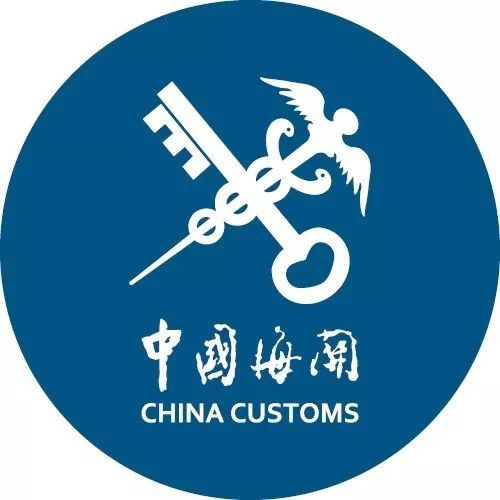Foreign Aquatic Products Manufacturers to China GACC Registration Procedure
 The Regulations on the Registration and Administration of Overseas Producers of Imported Food
(Decree 248) enter into force on January 1, 2022. the measure will require that
all overseas food manufacturers, processors, and storage facilities be registered with the Chinese
authorities to export product to China. The measure covers all food products except food additives.
Depending on the product category, food producers must register with the General Administration of
Customs of China either a) through the competent authority of the exporting country or b) directly
and/or through a private agent.
The Regulations on the Registration and Administration of Overseas Producers of Imported Food
(Decree 248) enter into force on January 1, 2022. the measure will require that
all overseas food manufacturers, processors, and storage facilities be registered with the Chinese
authorities to export product to China. The measure covers all food products except food additives.
Depending on the product category, food producers must register with the General Administration of
Customs of China either a) through the competent authority of the exporting country or b) directly
and/or through a private agent.
Under Decree 248, manufacturers, processors, and storage facilities of the following product groups must be recommended by their country’s competent authority for registration with GACC: meat and meat products, sausage casings, aquatic products, dairy products, bird nest products, bee products, eggs and egg products, edible oils and fats, oilseeds, stuffed wheaten products, edible grains, milled grain industry products and malt, fresh and dehydrated vegetables, dried beans, condiments, nuts and seeds, dried fruits, unroasted coffee and cocoa beans, foods for special dietary purposes, and health foods.
Seafood GACC Register Application
According to GACC Decree 248. Foreign exporters seafood register, all foreign Seafood processing plant / Seafood fishing and seafood transport boat / Seafood processing boat / Seafood independent cold storage are required to file their company information online with the Bureau of Import and Export Food Safety of GACC, This requirement comes into force with effect from January 01, 2022 and every 5 years renewal in GACC.
Registration for Exporters or Agents Overseas
The Notice implies that any seafood processing plant / fishing and transport boat / processing boat / independent cold storage shall submit a filing application to GACC before they export seafood to CHINA. Exporters shall fill and submit the application form of seafood exporter through the registration filing management system. Such as the Company Name, country, area, address, contact name, telephone, seafood category, test report, etc.. After submitting the application that exporter will obtain a registration number by the GACC. So can based on the registration number to declare seafood products at China Customs.
Registration Seafood Categories
Salmon, Atlantic salmon, herring, sardines, herring, tuna, bonito, mackerel, anchovy, eel,Tilapia, channel catfish, catfish, canned fish, canned shark fin. Sturgeon caviar substitute. Crab, shrimp, lobster. Crustaceans, crayfish, oysters (oysters including sea fans, mussels). Cuttlefish and squid, clams, clam and shellfish, abalone, snail, sea cucumber, sea urchin, jellyfish, aquatic invertebrates. Evaluation and review procedures for aquatic products to be exported to China 1. Applications are accepted. The intended exporting country (region) submits a formal application for exporting aquatic products to China to the General Administration of Customs in written form. The General Administration of Customs follows the general principles stipulated in the Agreement on the Implementation of Sanitary and Phytosanitary Measures of the World Trade Organization, and decides whether to initiate the access procedure based on the aquatic animal epidemic situation and food safety status of the exporting country (region). If activated, a risk assessment questionnaire for relevant aquatic products will be submitted to the intended exporting country (region).
2. Organization evaluation. The General Administration of Customs organizes an expert group to conduct a risk assessment on the official answer sheet and relevant technical information provided by the intended exporting country (region), and forms an assessment report. During the evaluation process, if necessary, the exporting country (region) agrees to send an expert group to conduct on-site inspections, or conduct verification inspections to confirm the authenticity and consistency of relevant information and operations.
3. Negotiate inspection and quarantine requirements. According to the evaluation results, the two parties will discuss the inspection and quarantine requirements for aquatic products exported to China, and determine the inspection and quarantine requirements after reaching an agreement (including signing inspection and quarantine protocols, memorandums or inspection and quarantine requirements published in announcements), and confirm the veterinary health certificates of products exported to China content and format.
4. Enterprise registration. After completing the above evaluation and review procedures, the enterprises planning to export to China shall register with the General Administration of Customs in accordance with the requirements. The General Administration of Customs provides information such as the official signing veterinary officer.
5. Importer filing and quarantine permit. Chinese importers should obtain the record qualification of imported food consignees in accordance with relevant regulations. If you import aquaculture products, you should apply for the "People's Republic of China Entry Animal and Plant Quarantine Permit" for importing aquatic products from registered enterprises in countries (regions) that have been admitted. Importers should import aquatic products that meet relevant inspection and quarantine requirements. After the product arrives at the Chinese port, it will be inspected and quarantined by the Chinese Customs.
China standard requirements for imported Seafood products:
 China_GB_2733-2015_National_Food_Safety_Standard_Fresh_Frozen_Aquatic_Products.pdf
China_GB_2733-2015_National_Food_Safety_Standard_Fresh_Frozen_Aquatic_Products.pdf
 China_GB_14881-2013_National_Food_Safety_Standard-General_Hygienic_Reg.pdf
China_GB_14881-2013_National_Food_Safety_Standard-General_Hygienic_Reg.pdf
 China_GB_20941-2016_National_Food_Safety_Standard_Hygienic_Practice_of_Aquatic.pdf
China_GB_20941-2016_National_Food_Safety_Standard_Hygienic_Practice_of_Aquatic.pdf



